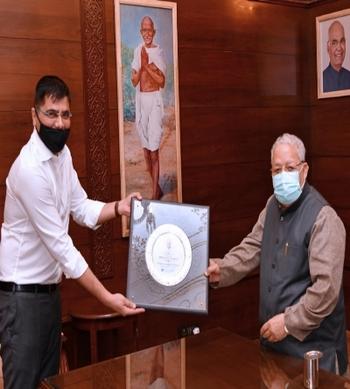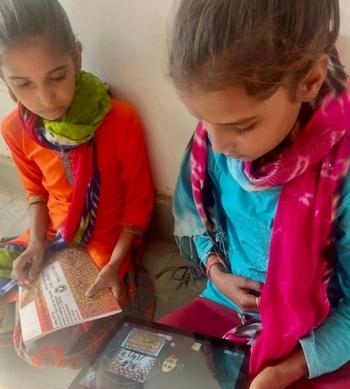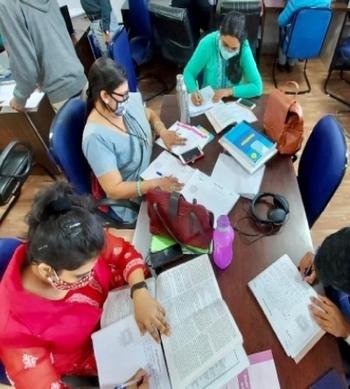CBSE Class 11 Biology Syllabus 2022-2023
The Central Board of Secondary Education (CBSE) has finished the term-wise exams for classes 9th-12th. That is, students would only be required to take the yearly exam at the end of the school year. Only in accordance with the annual assessment plan was the curriculum made available. Below is the CBSE Class 11 Biology Syllabus 2022-2023. When studying biology, students must follow the most recent syllabus. They should carefully study the unit-wise weightage and the given material to prepare for their CBSE Class 11 Biology Annual Exam 2022-2023. In addition, they must complete their practicals in accordance with the new Biology syllabus.
Time: 03 Hours Max. Marks: 70 | ||
Unit | Title | Marks |
I | Diversity of Living Organisms | 15 |
II | Structural Organization in Plants and Animals | 10 |
III | Cell: Structure and Function | 15 |
IV | Plant Physiology | 12 |
V | Human Physiology | 18 |
| Total | 70 |
Skip to
Download CBSE Class 11th Biology
Unit-I Diversity of Living Organisms
Chapter-1: The Living World
Biodiversity; Need for classification; three domains of life; taxonomy and systematics; concept of species and taxonomical hierarchy; binomial nomenclature
Chapter-2: Biological Classification
Five kingdom classification; Salient features and classification of Monera, Protista and Fungi into major groups; Lichens, Viruses and Viroids.
Chapter-3: Plant Kingdom
Classification of plants into major groups; Salient and distinguishing features and a few examples of Algae, Bryophyta, Pteridophyta, Gymnospermae (Topics excluded – Angiosperms, Plant Life Cycle and Alternation of Generations)
Chapter-4: Animal Kingdom
Salient features and classification of animals, non-chordates up to phyla level and chordates up to class level (salient features and at a few examples of each category)Unit-II Structural Organization in Animals and Plant
Chapter-5: Morphology of Flowering PlantsMorphology of different parts of flowering plants: root, stem, leaf, inflorescence, flower, fruit and seed. Description of family SolanaceaeChapter-6: Anatomy of Flowering PlantsAnatomy and functions of tissue systems in dicots and monocots.Chapter-7: Structural Organisation in Animals
Morphology, Anatomy and functions of different systems (digestive, circulatory,respiratory, nervous and reproductive) of frog.Unit-III Cell: Structure and Function
Chapter-8: Cell-The Unit of Life
Cell theory and cell as the basic unit of life, structure of prokaryotic and eukaryotic cells; Plant cell and animal cell; cell envelope; cell membrane, cell wall; cell organelles - structure and function; endomembrane system, endoplasmic reticulum, golgi bodies, lysosomes, vacuoles, mitochondria, ribosomes, plastids, microbodies; cytoskeleton, cilia, flagella, centrioles (ultrastructure and function); nucleus.
Chapter-9: Biomolecules
Chemical constituents of living cells: biomolecules, structure and function of proteins, carbohydrates, lipids, nucleic acids; Enzyme - types, properties, enzyme action. (Topics excluded: Nature of Bond Linking Monomers in a Polymer, Dynamic State of Body Constituents – Concept of Metabolism, Metabolic Basis of Living, The Living State)
Chapter-10: Cell Cycle and Cell Division
Cell cycle, mitosis, meiosis and their significanceUnit-IV Plant Physiology
Chapter-13: Photosynthesis in Higher Plants
Photosynthesis as a means of autotrophic nutrition; site of photosynthesis, pigments involved in photosynthesis (elementary idea); photochemical and biosynthetic phases of photosynthesis; cyclic and non-cyclic photophosphorylation; chemiosmotic hypothesis; photorespiration; C3 and C4 pathways; factors affecting photosynthesis.
Chapter-14: Respiration in Plants
Exchange of gases; cellular respiration - glycolysis, fermentation (anaerobic), TCA cycle and electron transport system (aerobic); energy relations - number of ATP molecules generated; amphibolic pathways; respiratory quotient.
Chapter-15: Plant - Growth and Development
Seed germination; phases of plant growth and plant growth rate; conditions of growth; differentiation, dedifferentiation and redifferentiation; sequence of developmental processes in a plant cell; growth regulators - auxin, gibberellin, cytokinin, ethylene, ABA;
Unit-V Human Physiology
Chapter-17: Breathing and Exchange of Gases
Respiratory organs in animals (recall only); Respiratory system in humans; mechanism of breathing and its regulation in humans - exchange of gases, transport of gases and regulation of respiration, respiratory volume; disorders related to respiration - asthma, emphysema, occupational respiratory disorders.
Chapter-18: Body Fluids and Circulation
Composition of blood, blood groups, coagulation of blood; composition of lymph and its function; human circulatory system - Structure of human heart and blood vessels; cardiac cycle, cardiac output, ECG; double circulation; regulation of cardiac activity; disorders of circulatory system - hypertension, coronary artery disease, angina pectoris, heart failure.
Chapter-19: Excretory Products and their Elimination
Modes of excretion - ammonotelism, ureotelism, uricotelism; human excretory system – structure and function; urine formation, osmoregulation; regulation of kidney function - renin - angiotensin, atrial natriuretic factor, ADH and diabetes insipidus; role of other organs in excretion; disorders - uremia, renal failure, renal calculi, nephritis; dialysis and artificial kidney, kidney transplant.
Chapter-20: Locomotion and Movement
Types of movement - ciliary, flagellar, muscular; skeletal muscle, contractile proteins and muscle contraction; skeletal system and its functions; joints; disorders of muscular and skeletal systems - myasthenia gravis, tetany, muscular dystrophy, arthritis, osteoporosis, gout.
Chapter-21: Neural Control and Coordination
Neuron and nerves; Nervous system in humans - central nervous system; peripheral nervous system and visceral nervous system; generation and conduction of nerve impulse
Chapter-22: Chemical Coordination and Integration
Endocrine glands and hormones; human endocrine system - hypothalamus, pituitary, pineal, thyroid, parathyroid, adrenal, pancreas, gonads; mechanism of hormone action (elementary idea); role of hormones as messengers and regulators, hypo - and hyperactivity and related disorders; dwarfism, acromegaly, cretinism, goiter, exophthalmic goitre, diabetes, Addison's disease. Note: Diseases related to all the human physiological systems to be taught in brief.Conclusion
The CBSE Class 11 Biology Syllabus for the academic year 2022-2023 covers a wide range of topics that aim to provide students with a strong foundation in biology. It encompasses the study of living organisms, cell biology, plant and animal physiology, genetics, evolution, and environmental science. By understanding the concepts and principles outlined in the syllabus, students will develop critical thinking skills and a scientific approach to understanding the natural world. This knowledge will not only benefit them academically but also help them in making informed decisions and contributing to society.
FAQs
1.What is the CBSE Class 11 Biology Syllabus?
The CBSE Class 11 Biology Syllabus for the academic year 2022-2023 is a comprehensive curriculum that covers various topics in biology, including the diversity of living organisms, cell biology, plant and animal physiology, genetics, evolution, and environmental science.
2.What are the main objectives of the CBSE Class 11 Biology Syllabus?
The main objectives of the CBSE Class 11 Biology Syllabus are to develop students' knowledge and understanding of fundamental biological concepts, promote scientific inquiry and critical thinking skills, and provide a foundation for further studies in biology and related fields.
3.How can I prepare for the CBSE Class 11 Biology exam?
To prepare for the CBSE Class 11 Biology exam, it is important to study the prescribed textbooks, understand the concepts thoroughly, and practice solving a variety of questions. Additionally, engaging in practical activities, conducting experiments, and referring to supplementary study materials can enhance your understanding and application of biological concepts
4.Are there any practical components included in the CBSE Class 11 Biology Syllabus?
Yes, the CBSE Class 11 Biology Syllabus includes practical components. Practical sessions are designed to provide hands-on experience and develop skills in conducting experiments, making observations, recording data, and drawing conclusions based on experimental results.
Download CBSE Class 11th Biology PDF

MissionGyan Team
We aim to eradicate the education gap and serve equal and free education to all with the help of skilled and expert volunteers and teachers.





